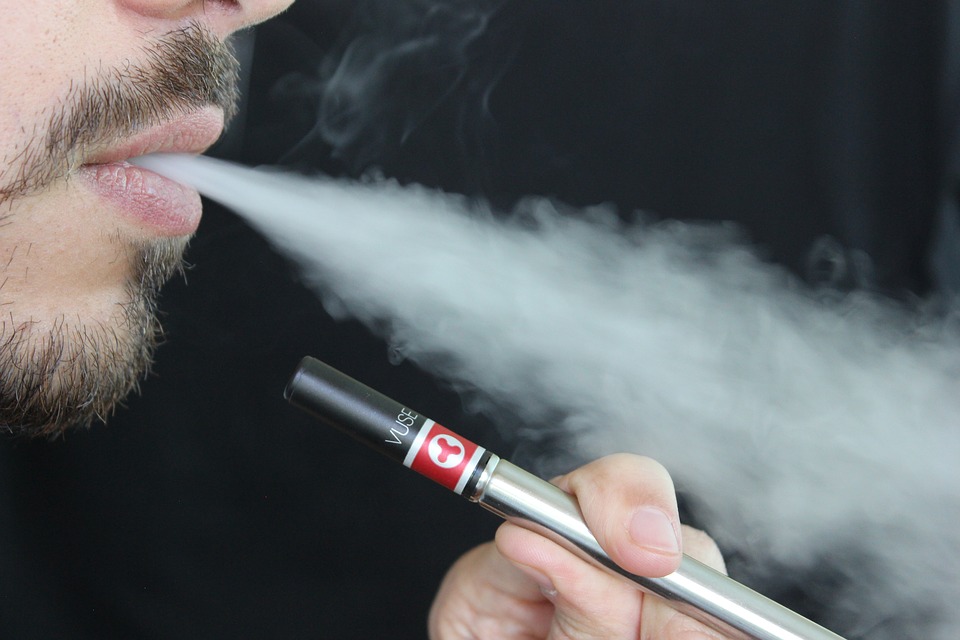The Great E-Cigarette Debate

E-cigarettes are a controversial subject, mostly because they’re still so new. Medical science has yet to settle on how safe they are, and different studies have produced varied — and often conflicting — results. Both scientists and the public are at a complete loss as to what the long term effects of these devices might be. However, despite the lack of considerable research, there are definitely two sides to this debate.
A Safer Alternative
A strong majority of people consider vaping to be a safer alternative to traditional cigarettes. Since e-cigarettes don’t produce tar or smoke, the levels of dangerous chemicals they give off are a fraction of those delivered by a traditional cigarette.
Furthermore, many believe e-cigarettes will help them quit or cut down on tobacco smoking. A questionnaire of 3,500 e-cigarette users found that 79% of former smokers believed they would relapse if they stopped using e-cigarettes.
Two smaller studies bore evidence to back that claim. The first, an email study of 216 e-cigarette users found that 31% were tobacco free at six months, and 66% were able to cut back on the number of traditional cigarettes they smoked. The second, a study of 40 smokers also found that vaping helped smokers reduce the number of traditional cigarettes they smoked each day.
Although a large majority of e-cigarette users feel vaping is safe, there is some evidence that it may not be as safe as they hoped.
A Potentially Dangerous Unknown
Though e-cigarettes don’t generate smoke or tar, there are some ingredients in them that might give cause for alarm. First of all, nicotine is present in most e-cigarettes, and while it may not be carcinogenic, it is addictive. What’s more, nicotine can harm the brains of adolescents, and is incredibly dangerous for pregnant women; nicotine increases the chances of miscarriage and stillbirth, premature birth, low birth weight, and risk the infant will develop respiratory problems.
E-cigarettes also contain propylene glycol and various food flavorings. While considered safe to eat in small quantities, research has yet to be done on the effects of these compounds when inhaled deeply and repeatedly.
A study from Environmental Health Perspectives looked at 51 of the nearly 7,000 vape flavors currently on the market. They were checking for the flavoring chemicals diacetyl, 2,3-pentanedione, and acetoin — all of which have been shown to be associated with a disease called popcorn lung. They found diacetyl at higher than laboratory normal levels in 39 of the tested flavors.
What may be most frightening of all is that scientific testing indicates that e-cigarette products vary widely in the amount of nicotine and other chemicals they deliver — and currently there is no way for consumers to find out what is actually delivered by the products they have purchased. Strictly speaking, there’s no one to verify exactly what’s inside e-cigarettes or how much of it there is.
Other Dangers
Besides the uncertainty of the impact of e-cigarettes on the user’s health, there are a couple other pressing problems to be aware of.
According to the Centers for Disease Control, there’s been a significant jump in poisonings from e-juice containers. In September 2010, there was one case of such a poisoning. By February of 2014, there were 215. More than half of these calls involved children under the age of five ingesting, inhaling, or getting the substance in their eyes or on their skin. These poisonings are made possible by the lack of mandated child safe caps on e-juice containers.
In 2014, the Federal Emergency Management Agency (FEMA) released a report identifying 25 occurrences of e-cigarette fires or explosions linked to lithium ion batteries — some of which caused severe injuries to the users. Since the report was released, a number of lawsuits have been filed against both the retail stores that sold the e-cigarettes, as well as the manufacturer.
Attorney Richard Newsome, who is representing two of the injured parties, had this to say:
“Despite industry knowledge about the dangers of lithium ion batteries exploding and causing injuries, there have been relatively few safety design changes implemented, or even considered, to protect consumers. “
With e-cigarettes posing both health and safety dangers, their future is uncertain.
Where Do We Go From Here?
In May of 2016, the Food and Drug Administration announced that all tobacco products — including e-cigarettes, cigars, hookah tobacco and pipe tobacco — would be subject to regulation.. The new regulations will go into effect on August 8, 2016, and will also prohibit the sale of all tobacco products, including e-cigarettes, to anyone under the age of 18.
Even though we still have yet to answer many of the questions surrounding the long-term health effects of e-cigarettes, we are moving forward.








